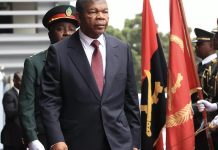write Stephanie Kitchen and David Mills
Africa-Press – Angola. Academic publishers working in and on Africa range from the large multinationals to small independent presses. But new publishing and funding models are needed.
There is a huge range of social science and humanities journals publishing on, and from, Africa. Yet a lack of funding, and institutional and infrastructural support risks holding back many of these titles and the academics who rely on them.
A tale of three journals
The Africa Review (TARE) is over 50 years old. Founded in 1971 at the University of Dar es Salaam (UDSM) as a quarterly journal of African politics and international affairs, it has attracted manuscripts from all over the world. Leading scholars, activists and politicians who have written for the journal include Ali Mazrui, Boutros Boutros-Ghali, and Adebayo Adedeji.
TARE has faced many ups and downs over the years. It has endured shortages of submissions and resources from its parent university, as well as poor visibility, distribution and lack of indexing. Published bi-annually in the 1980s it is now published five times per year online and in print.
Being published by Brill, a humanities and social science publisher in the Netherlands that recently merged with De Gruyter, has helped transform its fortunes since 2019. Relatively rare for a journal based in Africa, it is indexed in Scopus, an influential global citation index, owned by Elsevier. Being indexed is key to making journals visible, tracking citations, and generating Impact Factors. Scopus and Web of Science are highly selective, and it is hard for African journals to get indexed without the support of an established publisher.
The current editors, Alexander Makulilo and Rodrick Henry have called the UDSM-Brill agreement a ‘game changer’ for TARE. ‘The journal has increasingly become competitive internationally.’ Crucially, UDSM has retained ownership and control of copyright, allowing the journal to negotiate contract terms, such as for editorial support, and the option to move publishers.
Hespéris-Tamuda is a history journal published in Morocco. The French-language Hespéris was launched in Rabat in 1921 to promote study of Morocco and the wider Muslim West. Tamuda: Revista de investigaciones marroquíes was established in the Spanish protectorate in northern Morocco in 1953. It drew inspiration from contemporary scientific journals. Tamuda encompassed other fields of Moroccan studies, including archaeology and natural sciences. The journal contained a small section of articles in Arabic, a literary supplement in Spanish and Arabic, and a supplement dedicated to the Moroccan bibliography.
Hespéris continued after Morocco gained independence. In 1956 the Ministry of Higher Education opted to preserve the journal by merging it with Tamuda, forming Hespéris-Tamuda. The new journal actively involved Moroccan authors who aimed to write Moroccan history in both French and Spanish. Like TARE, the journal has experienced sharp vicissitudes in its fortunes. Until the 1980s it was unable to fill the void left by the departure of the French researchers who had run it during the colonial era. Arabic was re-introduced in 1990, given the lack of French language submissions. With its reputation declining, the journal stopped publishing for three years.
In 2015, Hespéris-Tamuda took a new direction. The Moroccan Ministry of Higher Education decided to properly fund the journal and put it on the road to indexation. Being published online from 2015 facilitated its dissemination. Since 2016, Hespéris-Tamuda has been indexed in Clarivate’s Emerging Sources Citation Index. From 2019 to 2022, the journal published four issues per year. In 2024, it was indexed by Scopus.
African Studies Quarterly was founded in 1997 as a digital open access African Studies journal at the University of Florida. Scholars who have published with the journal include Abiola Irele, Réné Lemarchand and D. A. Masolo. Today, around 75 per cent of the journal’s authors are African.
Initially, the journal struggled to build its credibility. Scholars were reluctant to publish in an online-only journal, despite it being peer-reviewed and indexed in Scopus since 2003. Designed for use by readers in Africa with limited bandwidth, it remained accessible to scholars in Africa with poor internet connections.
From the very start, African Studies Quarterly has been what is now called a ‘diamond’ open access journal – free to publish in, free to read. It is a University of Florida publication, garnering support from IT and Library services in the university.
The editorial staff costs upwards of $70,000 per year are covered by the university. Editor Todd Leedy acknowledges this as the ‘central vulnerability’ of the journal’s finances, along with the challenges of keeping up with technological developments. But always ahead of its time, the journal is doing well. Supported by its institution, it can work with a new generation of scholars.
Discussion
These three journals illustrate the diversity of African social science and humanities publishing: multilocational, multilingual, and in some cases multinational. From Morocco to Florida via Dar es Salaam, published in English, French, Spanish and Arabic, all three have sustained strong transnational dimensions.
TARE is published with Brill, which reported a profit margin of around 5 per cent in 2023, relatively modest compared with the major publishing houses. The other two journals are published independently in Morocco and at a university in the US. African Studies journals have both been buffeted by postcolonial austerity and boosted by Cold War resourcing of area studies.
Internationally, academic journal publishing is dominated by commercial publishing companies, including Springer-Nature, Elsevier, Wiley, Sage, and Taylor & Francis. The sector continues to see new mergers and consolidations, as well as diversification into data analytics, research management ‘solutions’, and licensing content to train artificial intelligence.
A publisher with deep pockets can create a very different journal ‘experience’ for readers, authors and editors. Taylor & Francis, for example, is highly active in African social science and humanities journal publishing. It publishes around 70 Africa-focused journals, including many in South Africa, and is constantly investing in new technologies and marketing. Meanwhile, many of the continent’s university journals, including those published in languages other than English, rely on free Open Journals System (OJS) software, and diamond open access models that lack resources to pay editors. Journal resourcing is highly unequal, directly impacting their status and visibility.
In short, this is a fragmented and precarious landscape and has been for some time, evidenced by the number of journals that collapse or go dormant for long periods. Some African Studies journals have a global reputation, whilst others have stayed small and struggle to survive. All of this demonstrates the need for properly resourced Africa-focused publishing infrastructures at every level.
Africa-focused academic journals will continue to be published both within and beyond the African continent. Yet can they be made sustainable and globally visible when the continent lacks its own sustainable research platforms, medium to large sized journal publishers and university presses?
In December 2024, the second diamond Open Access summit will be held in Cape Town, South Africa. There is a growing policy enthusiasm – from UNESCO and the Gates Foundation to the European Union – for Open Science. There is rather less thought about financial sustainability and publishing models. Ambitious ‘manifestos’, ‘charters’ and ‘alliances’ calling to transform research and academic publishing risk becoming ‘infrastructures of utopia’. We suggest that the everyday resource challenges of small-scale journal publishing also deserve attention. Whether through commercial partnerships or institutional subsidies, Africa’s publishing infrastructures will need sustained, if necessarily modest, financial support.
LSE
For More News And Analysis About Angola Follow Africa-Press






